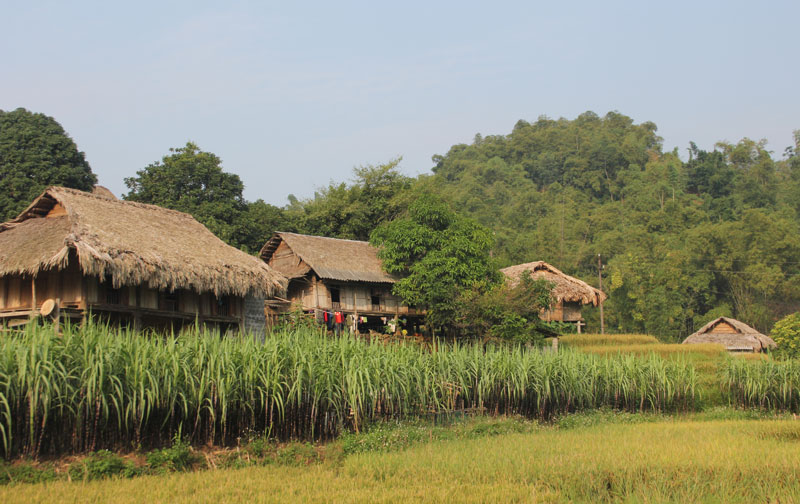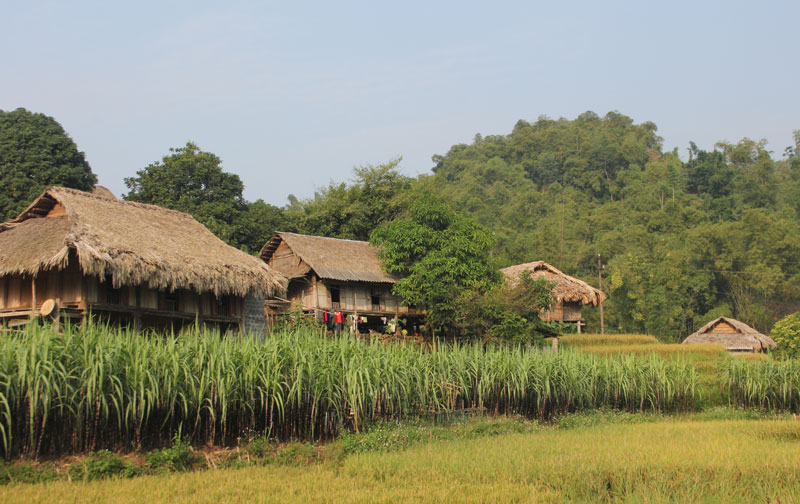
(HBO) – The northern mountainous province of Hoa Binh’s Cao Phong district is located on key waterways and roads that facilitate its own transport and socio-economic growth. These routes include 6A national highway, 12B and 435B provincial highways, and Hoa Binh lake that leads to Son La city.
Cao Phong is known for Muong
Thang, one of the four most famous areas in Hoa Binh inhabited by the Muong
ethnic community. Cao Phong is home to a range of tourist destinations such as Khanh
Pagoda historical site in Yen Thuong commune; Quoen Ang Pagoda in Tan Phong
commune; Cu Chinh Lan Monument in Binh Thanh commune; and Dau Rong Mountain
cave complex in Cao Phong town which was recognized as a national relic site by
the Ministry of Culture, Sports and Tourism in 2012.
Other destinations include
Hoa Son Thach, Phong Son, Nuoc (Water), Thanh Huy caves, Thuong Bong Lai
Temple, Coi Mountain Flower Garden, Muong ethnic minority group’s Giang Mo
village and community-based tourism establishments.
Eco and spiritual tours
are highlights of local tourism.

Giang Mo village in Binh
Thanh commune (Cao Phong) maintains typical features of the Muong ethnic
culture.
With its landscapes and
natural resources, Cao Phong is an ideal destination for community-based
tourism experience, cultural research, and weekend relaxation, among others.
However, the district’s tourism and services development has yet to be on par
with its potentials and advantages. In the first nine months of 2017, the
locality welcomed 256,687 tourists, including 1,506 foreigners. The tourism sector
generated 19.2 billion VND in revenues during the period. To make a
breakthrough in toruism, the district has designed a tourism development
project for 2016 – 2020, with a vision toward 2030.
Currently, Cao Phong is
implementing preferential policies and mechanisms to lure investment in
tourism, particularly in its key destinations such as Dau Rong mountain
ecotourism and spiritual tourism area and Hoa Binh lake./.
Spanning thousands of hectares and winding gracefully along mountain slopes, hillsides, and riverbanks, the terraced rice fields of Lac Son District present a stunning and captivating beauty. This region, renowned for its remarkable terraced landscapes, is also the centre of Hoa Binh Culture known for numerous archaeological sites.
The life of Mong people in Hang Kia and Pa Co communes of Mai Chau district has improved much thanks to tourism development.
The man-made Hoa Binh Lake, with a water surface area of approximately 9,000 hectares and a capacity of 9.45 billion cubic meters, stretches over 200 kilometers from Hoa Binh to Son La provinces. With the goal of developing into a national tourism area, the Hoa Binh Lake tourism area is expected to not only become the largest tourism centre in the province but also one of the 12 key tourist destinations in the northern midland and mountainous region of Vietnam.
Da Bia hamlet, now Duc Phong, in Tien Phong commune, Da Bac district, was once almost isolated from the outside as the only way to the hamlet was to get a boat ride across the Hoa Binh reservoir. However, as its tourism potential has been unleashed, the hamlet has established itself as one of the most attractive destinations on the tourism map. It has even received the ASEAN Community-Based Tourism Awards in 2019.
In the first 9 months of 2024, Mai Chau district, Hoa Binh province welcomed over 684 thousand visitors to visit and relax. In which, over 516 thousand domestic visitors and more than 168 thousand international visitors. Total revenue from tourism is estimated at over 821 billion VND.
Da Bac district, bestowed with stunning landscapes, is developing ecological and resort tourism offerings. Several tourist sites, put into operation this year, has attracted throngs of high-spending and young domestic visitors.



